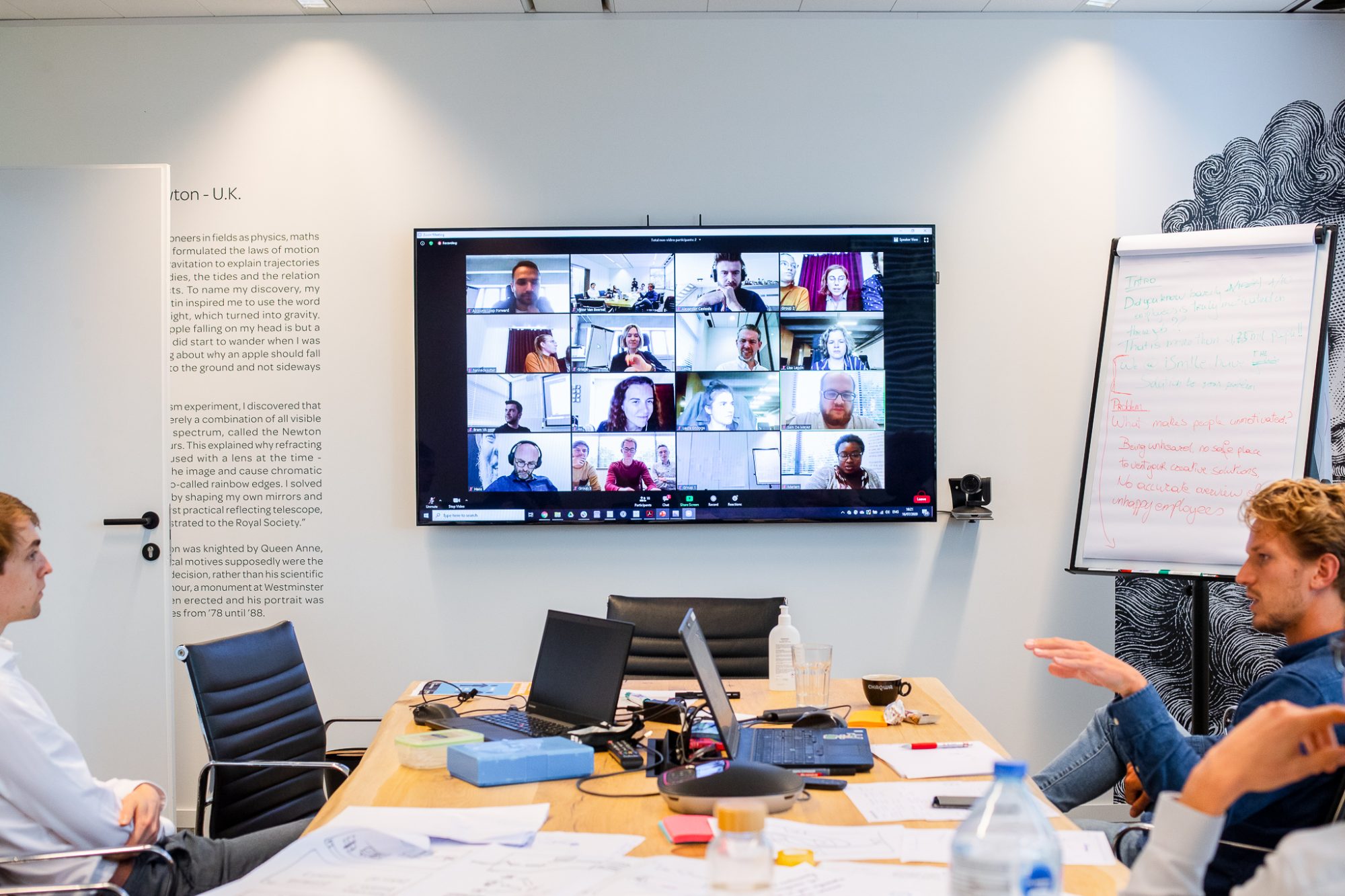Burrito’s and learning (part 1)
on 23 November 2020 for ProfessionalsStating the obvious
‘In these uncertain times…’ A sentence we’ve been hearing quite a lot over the last few months. Even though it might be an eyeroll-inducing moment for some of us, it still remains true, and just as much for Learning and Development.
We have a lot of pride in the training partners we select for our Smart Programs at Exellys. The training we provide has to bring added value. That means interactivity, practical take-aways and cultivating a growth mindset allowing for self-reflection. That often leads us to physical classroom training, because what’s more hands-on than physically being in a room, right?

Well, that has obviously been different these last few months. We along with everyone else made the dreaded switch to online, with the uncomfortable hesitance expected with any change. Here’s how we tackled that switch.
The toolbox
I feel like this topic has been covered endlessly, but aside from Zoom, Teams, etc. There are other great tools to keep in mind. Miro for one is a great tool to cooperate on a virtual whiteboard, a great replacement for your classroom flipchart. If not better in some cases, since you can work on one whiteboard with a ton of people simultaneously. You can make a massive whiteboard in advance and prepare sections of it where the groups or individuals will have to contribute.
Kahoot is another tool for example that we use to promote interactivity, it allows you to prepare some questions that you can have your participants answer. This promotes participants to actively think on what they’ve heard, and a quiz might motivate some competitive minds to be more engaged.
Digital fatigue (and how to tackle it)
It’s a term I picked up somewhere, and it rings true with me as well. Some of us spend all of our days in Teams calls, video chats with friends and family, after work events on Zoom, etc. The list goes on and on. Technology is great, but there’s a limit to that as well. And that’s definitely something to keep in mind with training too.
Switching to online training has contributed to these endless virtual encounters. So, it’s important to keep a few things in mind:
It all starts with planning
Plan your training during natural breakpoints of a working day. Always start a training first thing in the morning or right after lunch. And, this one should be obvious, but 8-hour online trainings should be avoided if it’s in any way possible. It’s usually best to spread those types of trainings over multiple days.
I need a break
Make sure the agenda is clear on when there are breaks during the training. It’s nicer to know upfront that the 4-hour afternoon training sessions will have two 15-minute breaks. Also, be honest with your participants. If you see their attention waning, ask if they need a break! Or, simply give them the opportunity to ask for a break when they feel they need one.
Hello from the other side
Make sure the cameras are on. Body language is a big part of any communication, if not the biggest. That’s somewhat lost in an online setting, so having a camera on for all your participants is key in recovering some of that experience. It’s much easier to at least talk to a floating face than to a black screen. It helps to reinforce the notion we’re talking to actual human beings.

Avoiding the monologues and applying the science
Get creative with screen time. Not everything has to be done in a videocall with 20 other people present. Assign some exercises before or after the training and discuss the results during the training instead.
For example, for a communications training, ask them to think of real-life situations where they didn’t feel they did all too amazing, and situations where they have. Instead of everyone rattling this off one by one during the training, pick out the most interesting ones that were sent in from the exercises and let the group discuss how they would have handled that situation.

This type of engagement has also been proven in the field of neuroscience to make your training stick better. Another idea would be to touch base a few weeks after the training and ask everyone who participated some hard-hitting questions. ‘How have you applied this technique so far?’, ‘Explain a situation you handled differently at work because of what you learned?’, etc.
Wrapping up
Now, I can almost hear you thinking: ‘Ok. But what on earth is that title? Burrito’s? I’m hungry now!’. Or maybe that last part is just me projecting. The comparison for me is that a burrito has a lot of different elements it needs to make it a tasty meal. If we draw that same comparison for our online training, then I’d say so far, we have covered the basics. We started chopping some vegetables and our pan is on the stove.

In part 2 we’ll finish our prep work and get ready to add some meat to the story. We’ll look at what other L&D professionals are cooking up and an example of a virtual training we’ve served to our learners (puns fully intended).
About Exellys
Exellys is a Tech Talent Incubator. We match ambitious companies with the finest tech talent. Are you ready to drive the innovations of tomorrow? Ready to make an impact and become a future-fit digital leader?
Whether you are a graduate or (young) professional, Exellys will unlock your full potential by guiding you to a challenging work environment that perfectly matches your personality, expectations and ambitions.
On top of that, you are enrolled in one of our very own training and coaching programs (based on your personal and professional ambition and experience). This means that, while working as an Exellys consultant, we are helping you to bridge your ambition to excellence.
Through intensive training and coaching, you’ll gain the essential skills, competencies and knowledge necessary to become the highly effective professional you aim to be.
Become an Exellyst and get in touch with us today!
Tags: covid-19 , training



